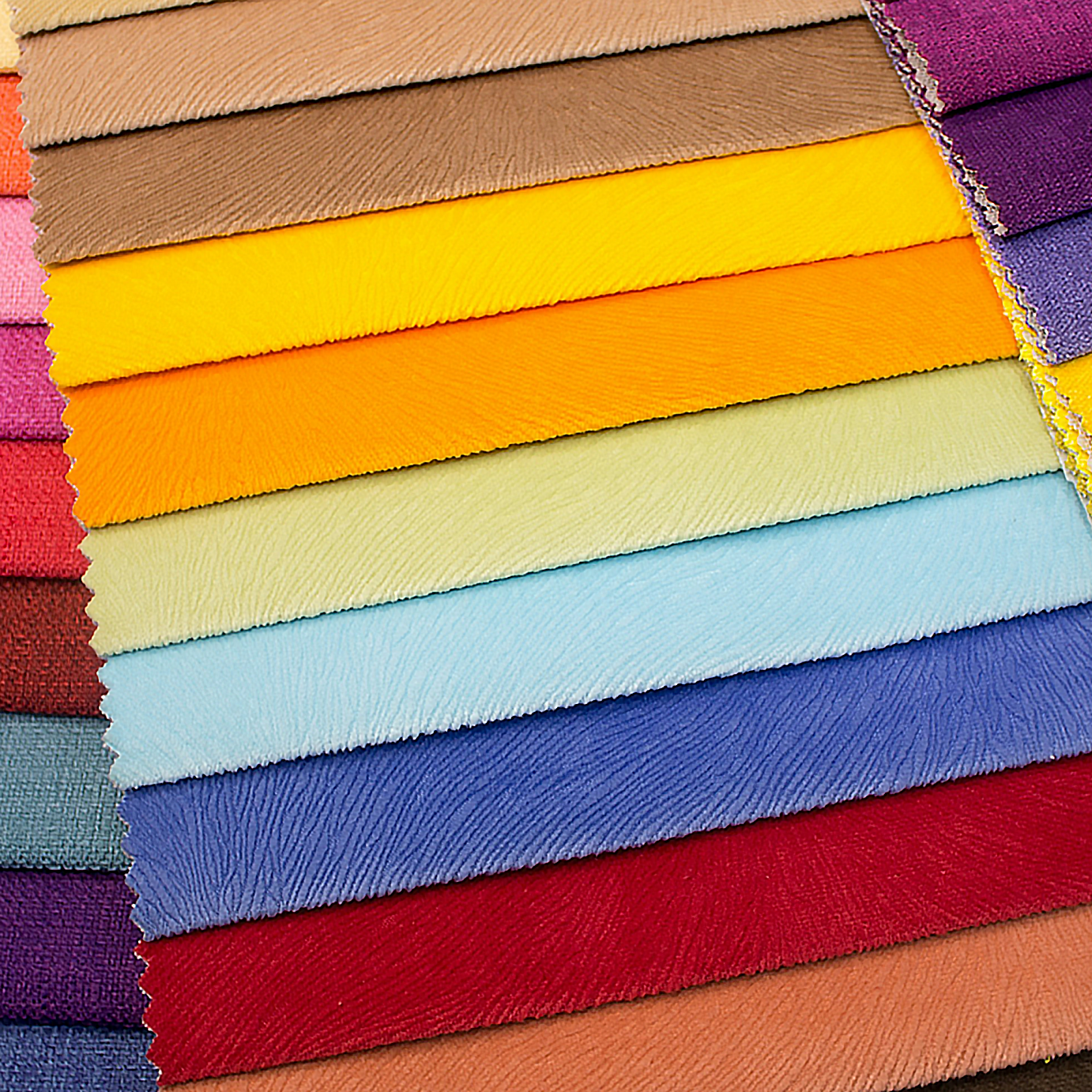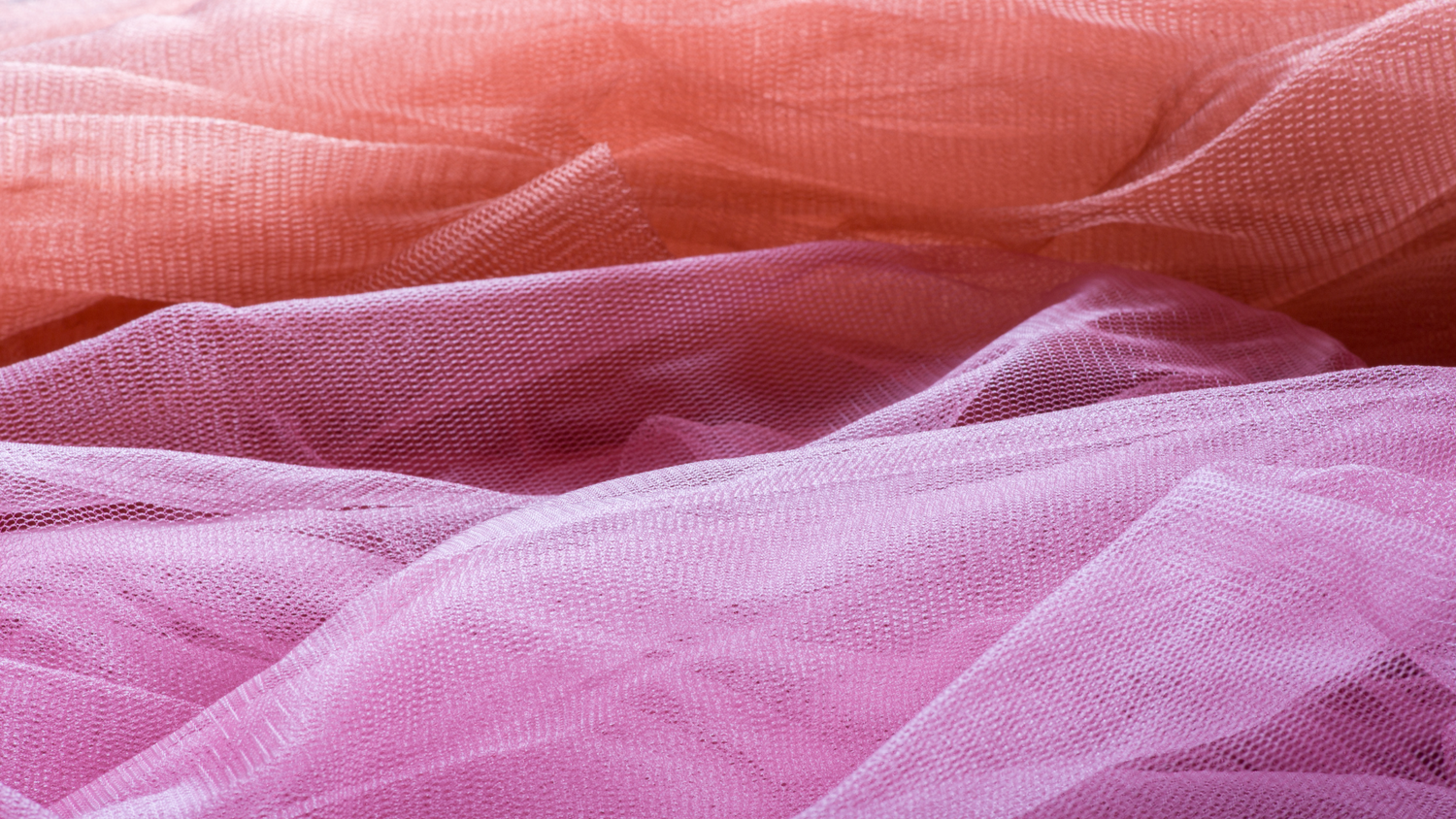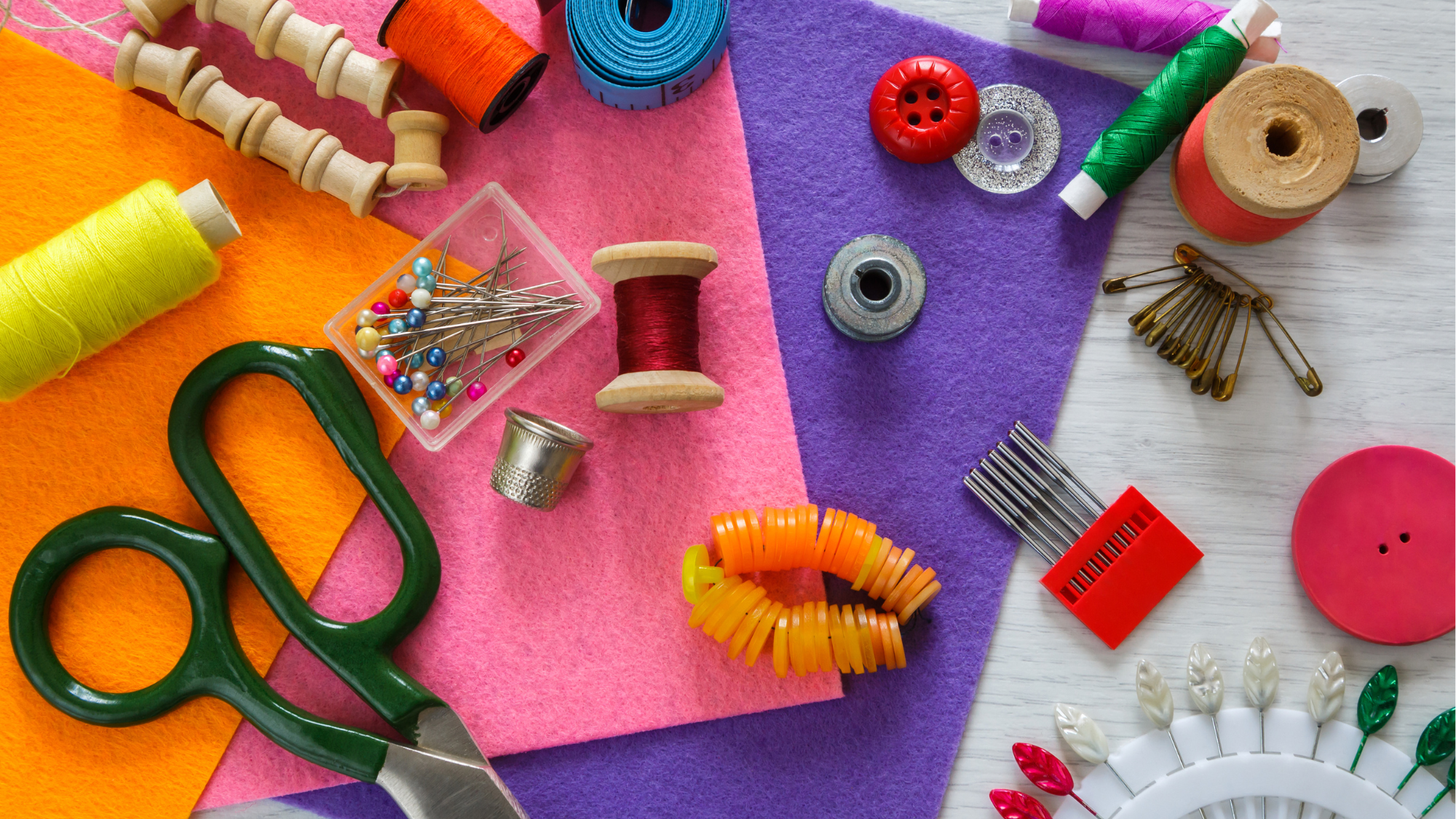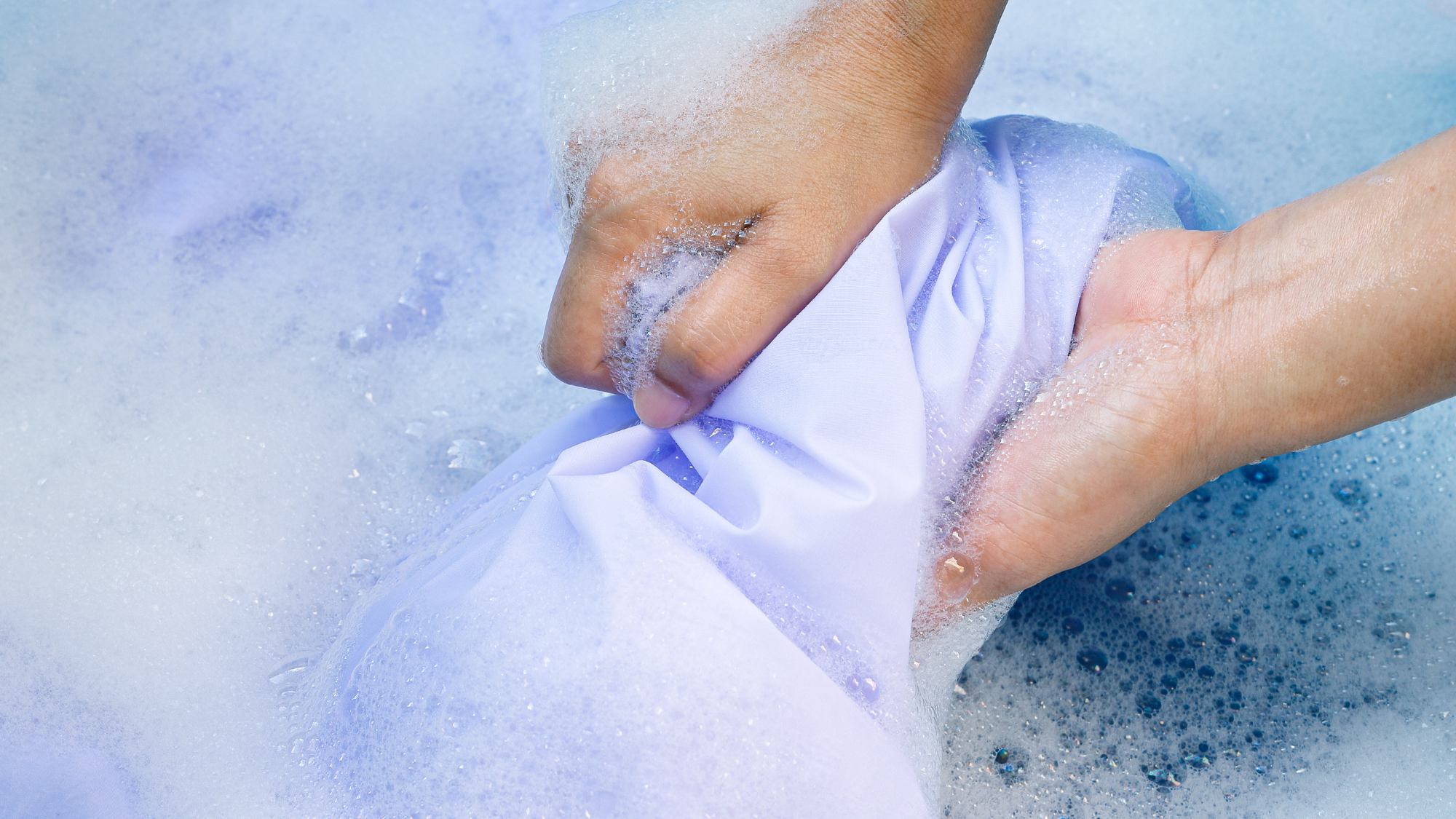
Sheer fabrics are lightweight and semi-transparent fabrics that allow light to pass through, giving them a delicate and elegant appearance. There are several types of sheer fabrics, each with its unique characteristics. But how do you know which one you should use for your project? Here are some common types of sheer fabric, how to tell them apart, and why you might choose one over the other.
Chiffon
Chiffon is a popular sheer fabric known for its soft, flowing drape. It is usually made from silk, polyester, or nylon fibers. Chiffon has a slightly rough feel and a subtle sheen. It is often used for dresses, scarves, and eveningwear.
Learn more about the uses and benefits of chiffon on our blog.
When to use chiffon: Chiffon's soft and flowing drape, along with its subtle sheen, makes it an excellent choice for creating ethereal and romantic looks. It offers an elegant appearance and is often selected for formal and special occasions.
Shop the Zelouf Chiffon Collection.

Iridescent Chiffon in Champagne from Zelouf Fabrics
Organza
Organza is a crisp and lightweight sheer fabric made from silk, polyester, or nylon. It has a stiff, transparent appearance and can be either plain or woven with patterns. Organza is commonly used for bridal gowns, formal wear, and decorative elements in fashion and home decor.
Learn more about organza fabric in our All About Organza guide.
When to use organza: Organza's crisp and stiff texture provides structure and volume to garments, making it ideal for creating a full and dramatic look. Its semi-transparent quality allows for delicate layering, adding depth to designs.
Shop the Zelouf Organza Collection

Zelouf Solid Mirror Organza in Turquoise
Georgette
Georgette is a sheer and slightly textured fabric made from silk or synthetic fibers like polyester or rayon. It has a crepe-like appearance, with a slightly crinkled texture, and it drapes well. Georgette is commonly used in dresses, blouses, and scarves.
When to use georgette: Georgette's combination of softness and texture gives it a versatile appeal. It drapes well while offering a touch of elegance, making it a great choice for various occasions and styles.
Shop the Zelouf Georgette Collection

Voile
Voile is a soft and lightweight sheer fabric usually made from cotton or cotton blends. It has a smooth texture and a slightly crisp hand. Voile is commonly used for summer clothing, curtains, and lightweight drapery.
When to use voile: Voile's lightweight and soft characteristics make it comfortable to wear in hot weather. It provides a semi-transparent look without being overly sheer, making it a practical choice for casual and relaxed garments.
Shop the Zelouf Voile Collection
Tulle
Tulle is a fine and airy net-like fabric made from silk, nylon, or polyester. It has a stiff texture and is often used for bridal veils, tutus, and decorative purposes.
Read our tips for how to style tulle on our blog.
When to use tulle: Tulle's stiff and airy texture makes it ideal for creating volume and structure in garments, especially for wedding attire and costumes. Its lightweight and versatile nature also make it suitable for various craft and DIY projects.
Shop the Zelouf Tulle Collection

Zelouf Candy Tulle in Yellow #1
Lace
Lace is an ornamental sheer fabric with intricate patterns and openwork designs. It can be made from various materials, such as cotton, silk, or synthetic fibers. Lace is often used as an overlay for dresses, lingerie, and decorative accents.
Get tips on how to sew lace from our blog.
When to use lace: Lace adds an intricate and feminine touch to garments and textiles. It can be used to create a delicate and elegant appearance, making it a perfect choice for bridal and formal wear. Lace is also a versatile material for adding decorative elements to various projects.
Shop the Zelouf Lace Collection
Mesh
Mesh fabric is a type of material characterized by an open, net-like structure created by evenly spaced yarns or threads. Mesh fabric is widely used for applications that require breathability, ventilation, and visibility.
Learn more about working with mesh on our blog.
When to use mesh: Choosing mesh fabric is beneficial for its lightweight nature and ability to wick away moisture, making it suitable for activities involving physical exertion. It provides comfort and functionality, especially in warm climates or during rigorous workouts, where breathability and quick-drying properties are essential.
Shop the Zelouf Mesh Collection
How to Tell Sheer Fabrics Apart
Visual inspection: Observe the appearance of the fabric. Look for differences in texture, sheen, and transparency. Some fabrics may have a smooth, shiny surface (like chiffon), while others may have a crepe-like texture (like georgette).
Touch and feel: Gently touch the fabric to gauge its texture and weight. Chiffon and organza may feel slightly rough, while georgette has a crinkled texture. Voile and batiste should feel soft and smooth to the touch.
Wrinkle test: Sheer fabrics like chiffon and georgette tend to be more wrinkle-resistant compared to tulle or lace. Gently scrunch the fabric and see how it recovers from wrinkles.
Flame test (with caution): If you have a small sample, you can carefully hold it over a flame. Different fabrics will react differently to the heat. For example, natural fibers like silk will burn and smell like burning hair, while synthetic fibers may melt and give off a chemical odor.
Always exercise caution when performing the flame test, and only do so in a controlled and safe environment. Alternatively, relying on visual inspection and touch is usually sufficient to differentiate between sheer fabrics.
Shop thousands of sheer fabrics on our online store, Zelouffabrics.com



